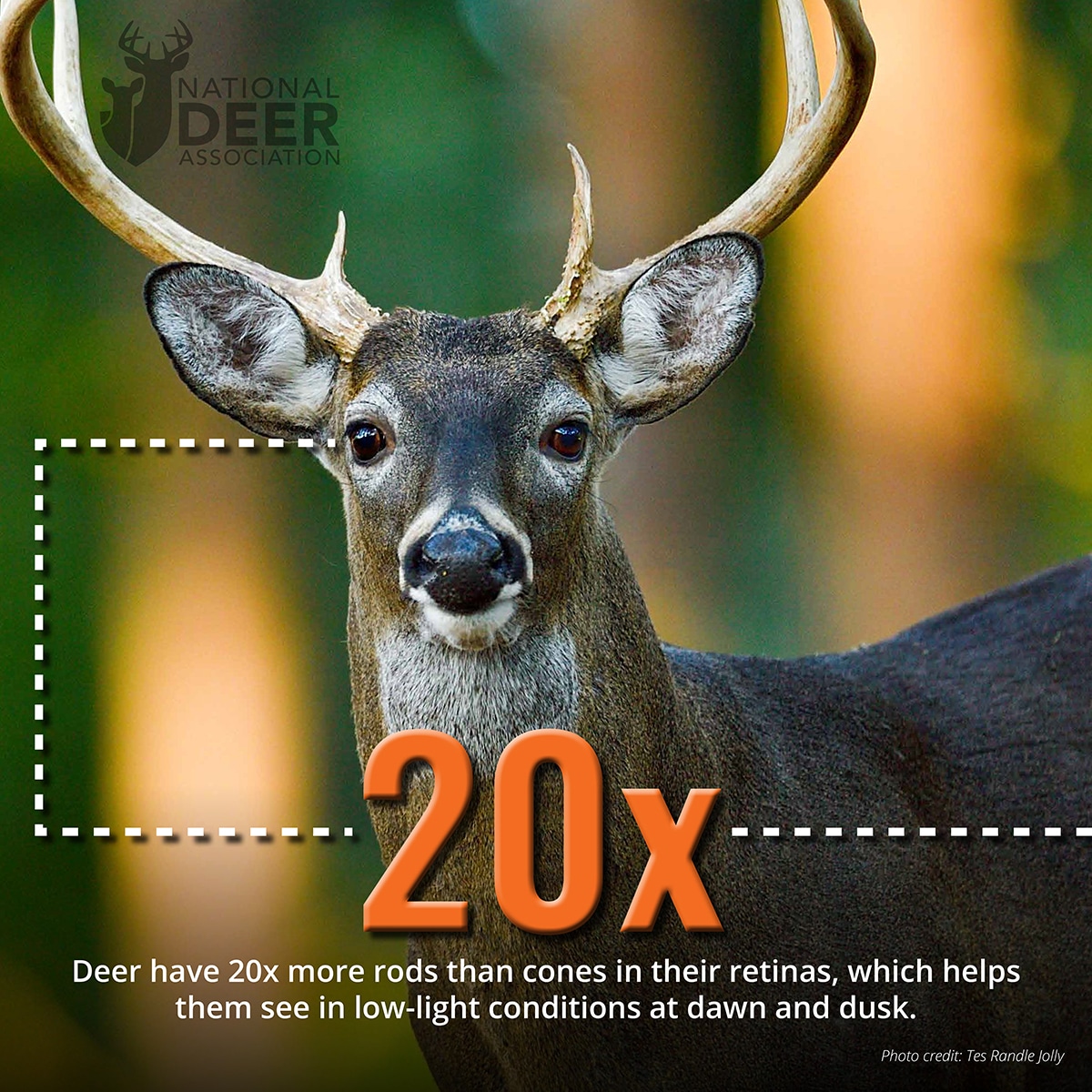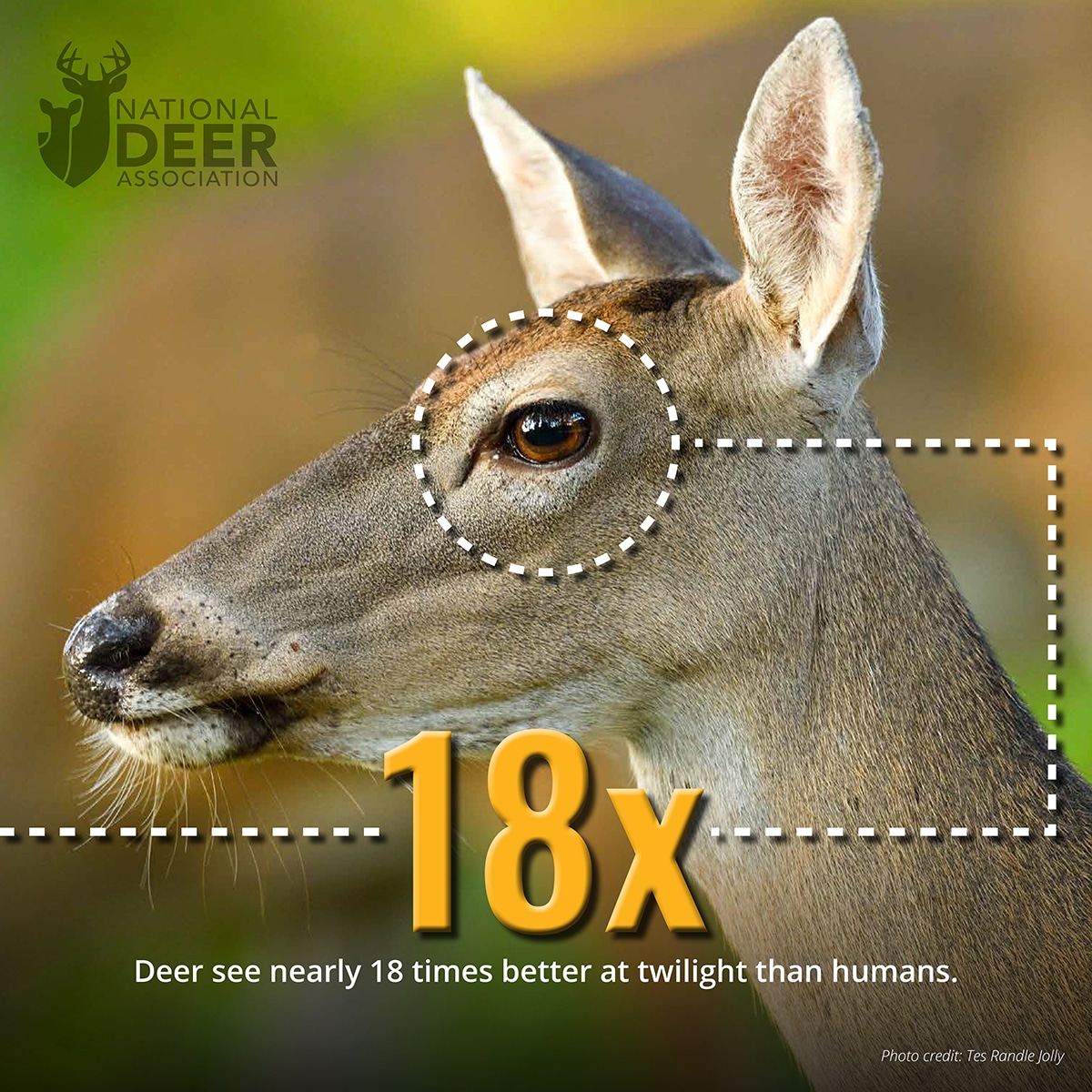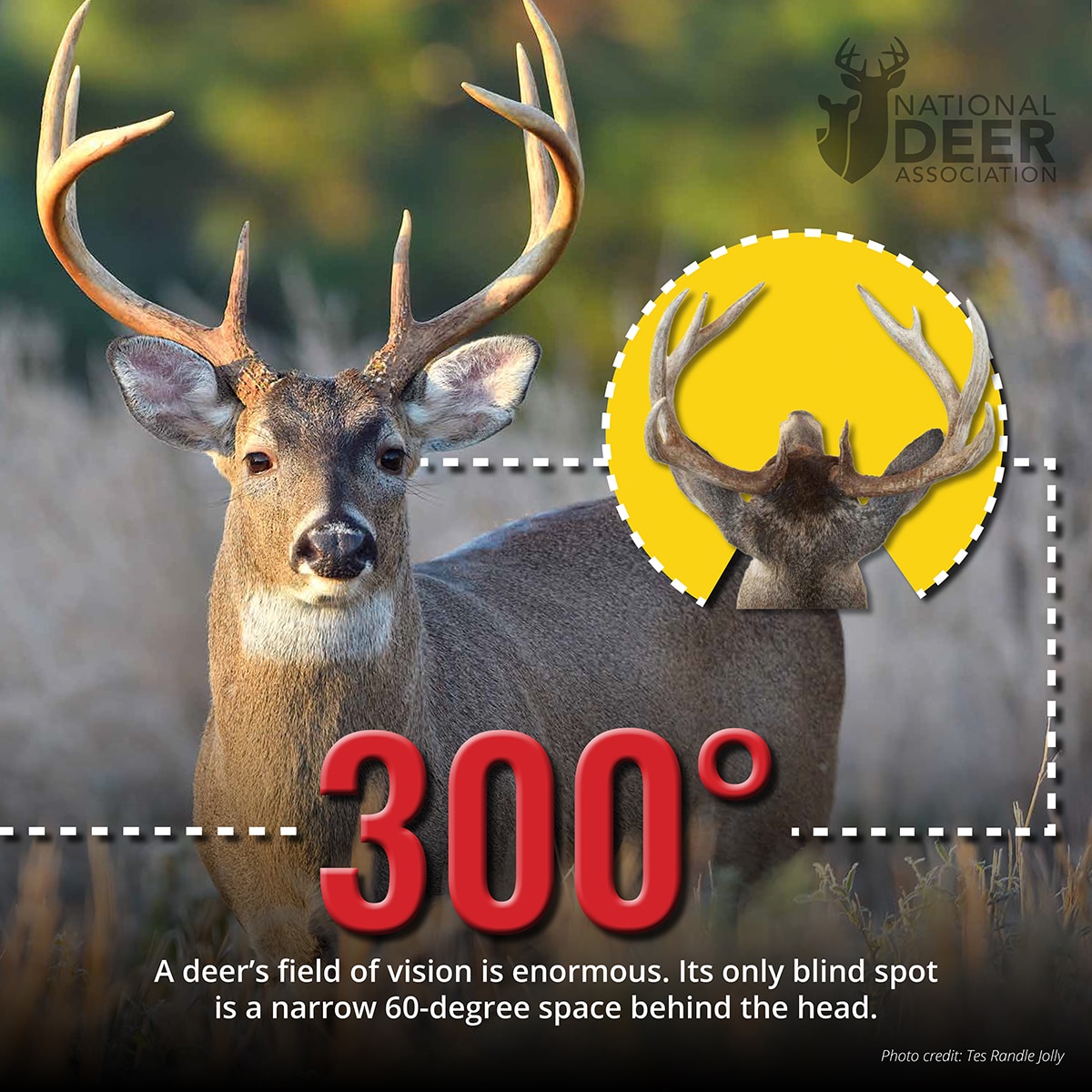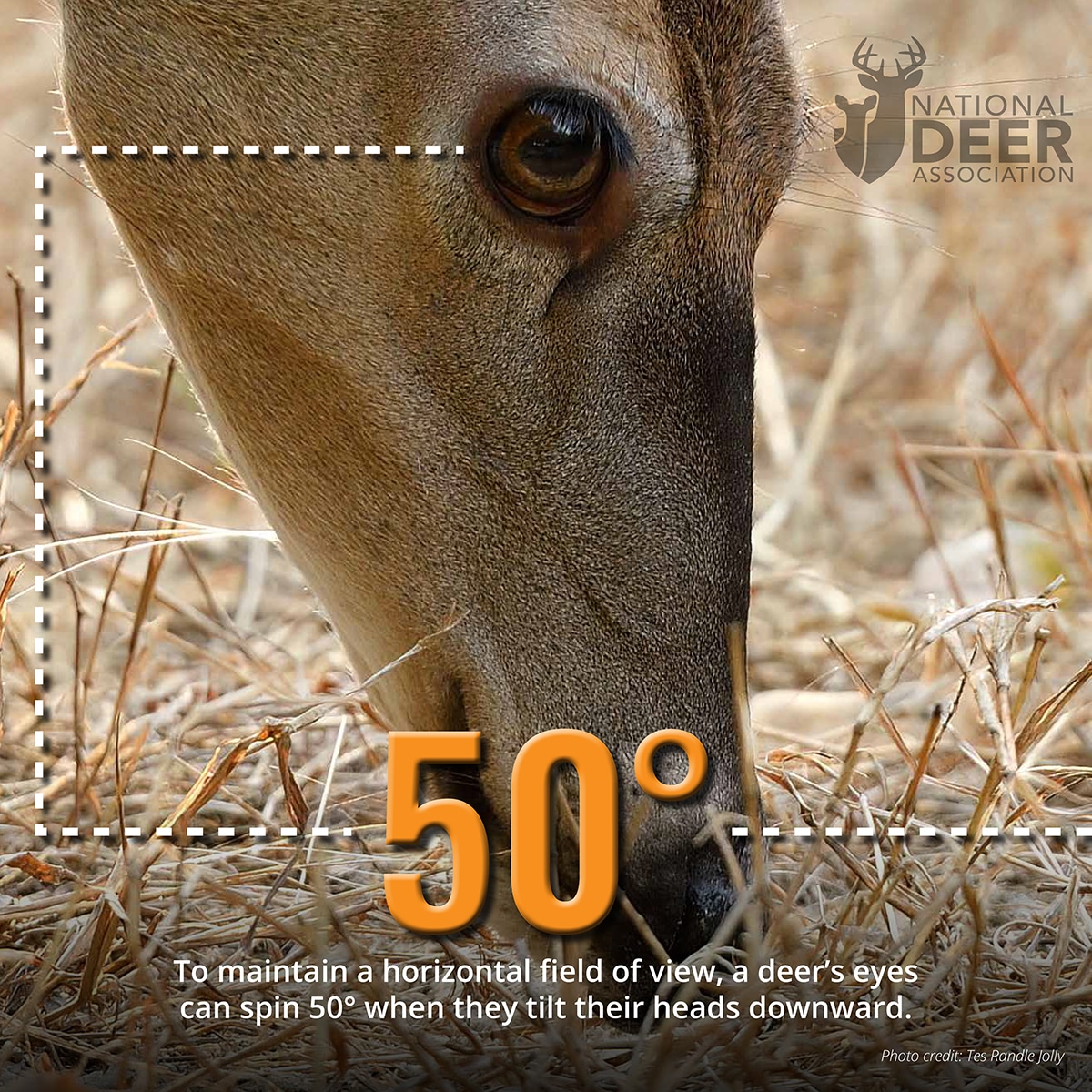Hunting and Fishing News & Blog Articles
7 FACTS ABOUT DEER VISION HUNTERS SHOULD KNOW
Understanding the actual facts about deer vision and how their eyes see will improve your deerhunting success.
As prey animals, deer are well equipped to detect and avoid predators, and one of their primary tools of defense is their vision. Deer hunters can be more successful when they understand the strengths and weaknesses of deer eyes. Reviewing scientific research from a number of sources, especially work at the University of Georgia Deer Lab, we compiled the seven most important facts for deer hunters to know about deer vision. Combined with professional wild deer photography from Tes Randle Jolly, the science helps us see how deer see.

20/60
Deer eyes have pupils that are wide, horizontal slits, as you can see in the image above. This shape allows them to let in more light than human pupils can, especially as they open wider in low-light conditions. It also is important in detecting movement across a wide, horizontal view where danger is most likely to appear. While this pupil shape helps them monitor a broader area, they sacrifice sharpness. Normal human eyesight is 20/20.
Deer have a normal daylight eyesight of about 20/60, which means they see 3 times less clearly than humans! If you have ever made eye contact with a deer for what felt like an eternity, it is likely because they are trying to figure out exactly what they’re looking at.

20x
Deer and humans both have photoreceptors in their eyes called rods and cones. Rods are responsible for light absorption and are what animals use to see in low light, while cones are responsible for color vision and distinguishing fine details.
Deer have fewer cones but more rods than humans. Thus, deer see better in low light than we do, but they see with less clarity. They also perceive color differently.

Blue
Can deer see blaze orange? The short answer is no, not in the same way that humans see it. Deer do not perceive the longer wavelengths of color, so oranges and reds appear as brown or gray. The image comparison above shows us how deer are likely to perceive a hunter’s orange vest based on what we know about deer eyes. Unlike humans, deer do not have built-in UV filters in their eyes, which allows them to capitalize on the additional light from shorter wavelengths (blues), which are most abundant at dawn and dusk.
Luckily, this is when deer are most active giving them a distinct advantage when moving to and from cover. Therefore deer can see blue nearly 20 times better than humans. If you’re going hunting, leave the blue jeans at home!

18x
Deer have a layer in the back of their eye that acts as a mirror. Any light that is not absorbed when it first enters the eye is reflected back across the rods. This allows deer to use the same light twice, while humans only get to use it once.
But the shape and location of this reflective layer is adapted to use light coming from the horizon, which is strongest at dawn and dusk. Deer are not nocturnal. They are best adapted to be “crepuscular,” active around dawn and dusk. They see about 18 times better at twilight than we do.

4x
Even though they have lower image sharpness, deer receive and process images nearly four times faster than humans at dawn and dusk, based on tests conducted at the University of Georgia Deer Lab.
This means they are extremely good at detecting even the slightest movement in their visual field, which is one reason this prey animal has survived for so long. It’s almost like they perceive the world around them in slow motion! So, distorted patterns in camouflage can help you blend into your surroundings due to a deer’s poor visual acuity – but only as long as you remain still!

300°
Because their eyes are positioned to the side of the head instead of the front, deer have a large field of vision, 300° to be exact, leaving only a 60° blind spot in the back of the head. This means that unless you are directly behind a deer, they can see you.
Humans only have a 180° field of view, but we have greater binocular overlap, which also helps with focus. Deer sacrifice clarity and focus for the ability to detect danger in almost every direction at once.

50°
A deer’s eyes can rotate about 50° – in opposite directions – when they lower their heads to the ground to feed. This keeps the pupils aligned with the horizon and maintains the wide field of view even when their nose is pointed downward. They can still see you move. This trick is called “cyclovergence” and was studied by the University of California at Berkley. Other ruminants like horses and goats can do it, too. Even if the deer’s head is down feeding, but you can still see its eye, don’t move yet!
CREDITS: NDA staff members Ben Westfall and Matt Ross compiled the scientific information for this article, while Laura Colquitt designed the graphic elements.
National Deer Association
P.O. Box 160
Bogart, GA 30622
Phone: 1-800-209-DEER (3337)
Email: [email protected]
Copyright
© Bowhunting.Net
